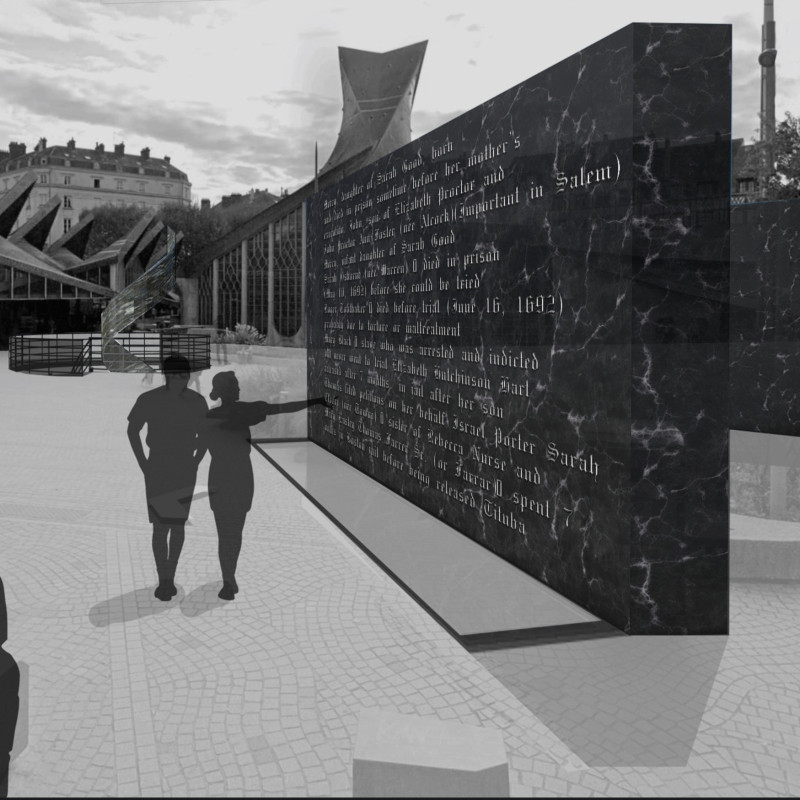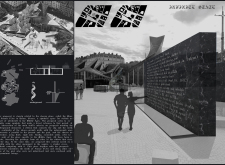5 key facts about this project
The design for the Place de Jeanne d'Arc in Rouen, France, focuses on a memorial for the victims of witch trials in the Middle Ages. Located in a historically rich square, the project emphasizes a blend of past narratives and present experiences. The goal is to create a space that encourages reflection and understanding of the injustices faced by those accused during this dark chapter in history.
Design Concept
At the core of the memorial is an underground feature described as a ribbon that connects the earth and the sky. This ribbon serves as a central element, guiding visitors through the space and evoking a sense of continuity over time. The flowing form of the ribbon not only draws the eye but also invites contemplation. Visitors can pause and reflect on the history connected to the site.
Continuity of Structure
The design also carefully considers the relationship between above-ground and below-ground walls. This connection highlights the integration of the new structure with its historical context. By allowing the walls to move together, the space creates a dialogue with the past. This physical interaction makes the experience of visiting the memorial more immersive, with layers of meaning that unfold over time.
Vertical Accents
A notable aspect of the design is the vertical element that rises toward the sky. This feature directs visitors' attention and enhances the spatial experience within the memorial. It works in tandem with the existing slender cross monument, fostering a sense of unity. Instead of competing, they complement each other, enriching the overall significance of the memorial.
Historical Reflection
The design honors Jeanne d'Arc and others who were misunderstood and suffered throughout history. By using symbolic elements and integrating them thoughtfully into the existing landscape, the memorial transforms the square into a place for visitors to learn and reflect. The ribbon remains a powerful symbol, serving as a reminder of the ongoing connection between history and memory. It encourages all who visit to think about justice and the lessons that can be learned from the past.



















































